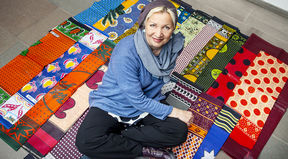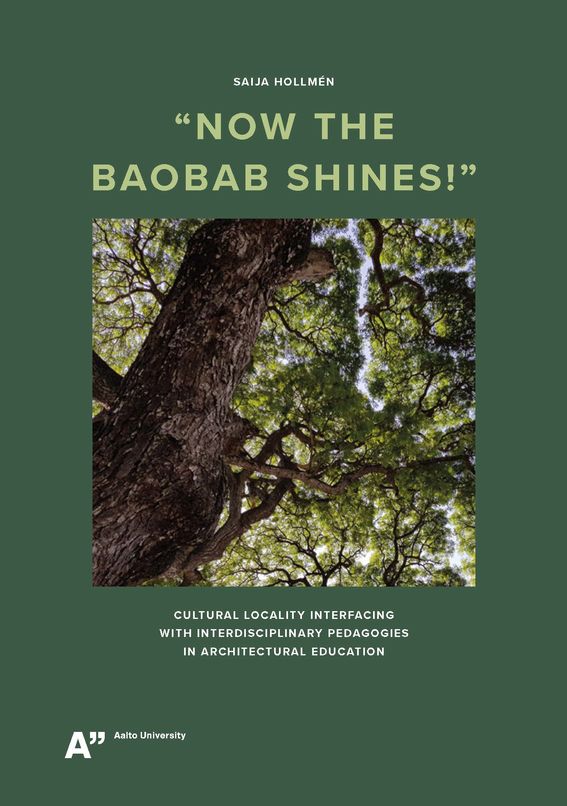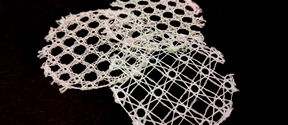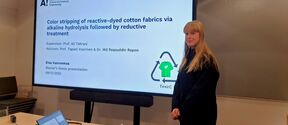Doctoral thesis: Humanitarian architecture creates security and protection in the midst of poverty and crises

The Interplay of cultures course on humanitarian architecture brought student of architecture Saija Hollmén on a field trip to Senegal, West Africa in the 1990s. For course work at the Helsinki University of Technology, she designed a women's centre together with her fellow students Jenni Reuter and Helena Sandman.
‘I'm still on that journey’, says Saija Hollmén, Vice Dean of the Aalto University School of Arts, Design and Architecture. She will defend her doctoral dissertation in the field of architecture, landscape and urban research on Friday 4 December.
The women's centre turned into more than just an exercise. Hollmén, Reuter and Sandman applied for funding to carry out the project, and the centre was completed in the city of Rufisque in 2001. It is an excellent example of humanitarian architecture that exports non-profit architectural expertise to countries and regions affected by poverty.
The trio currently has their own architecture firm alongside the Ukumbi NGO that it they founded. In her doctoral dissertation based on the trio's travel journals, Hollmén presents five architectural projects planned and implemented in cooperation with poor communities in Africa.
The aim of the study is to develop pedagogical practices for multidisciplinary architectural education to address global humanitarian challenges in different cultural environments.

Making something out of very little
Saija Hollmén, Professor of Practice for Humanitarian Architecture at Aalto University, is nowadays responsible for a course that allows students to learn about the conditions in developing countries.
‘You can’t go to crisis areas to practice. The ability to act during a crisis comes through persistent work. The aim of the Aalto course in humanitarian architecture is to better understand what needs to be done in the middle of acute distress.’
This kind of architecture is not meant to wow anyone.
‘When going on a field trip, I encourage students to leave their ego at home. Architects’ common pitfalls are an artistic approach and the desire to create alone. Humanitarian architecture requires multidisciplinary teamwork in order to make something out of very little.’
This can be achieved when building design is adapted to the local environment and culture. It requires listening to locals and communities, and close cooperation with regional organisations and universities. Everything is based on understanding different cultures and values, and on encountering people as equals.
‘The aim is to embed good and high-quality solutions in communities where resources are scarce. This can only be achieved through participation and local ownership.’
Car rims and glass bottles
The need for new construction is increasing as climate change and other crises drive people on the move and out of their homes. It has been estimated that there will be up to one billion climate refugees in the world by 2050.
The solutions and construction projects that are being developed must be both environmentally and culturally sustainable. Recycled materials play a major role in many projects.
‘For example, the women's centre in Senegal has air vents made of car rims and glass bricks made of bottles. Recycled and local materials were also used in Egypt when constructing a learning centre designed for the garbage collectors’ community in Cairo. Work on the centre was unfortunately interrupted due to Arab Spring in 2011.’
In addition to the above-mentioned projects, the doctoral dissertation presents three targets of humanitarian architecture in Tanzania: an orphanage designed for the city of Moshi, a women's shelter house built in Moshi, and a girls’ hostel built next to a school in the rural area of Iringa.
Much to do still
Finishing her dissertation is a big personal milestone for Hollmén, preceded by years of work in humanitarian architecture. Hollmén does not think twice when asked what she has learnt over the years:
‘It has been a gift to learn that, at the end of the day, people are all very alike.’
A passion for building a better world through architecture will continue to drive Hollmén forward.
‘My goal as a Professor of Practice is to strengthen local skills in developing countries through multidisciplinary university cooperation. In large infrastructural construction projects, external consultants often leave when the project is completed. Taking away their expertise with them.’
Hollmén wants to be involved in creating methods and programmes to strengthen local capacity during cooperation projects.
‘Strengthening local and self-sufficient competence in developing countries is the key to societal development. Education is a big path for this purpose. That's what we’re working on at Aalto.’
Hollmén is urging universities to take on a greater role in solving global crises. She calls for flexibility in the bureaucracy and operating methods of universities in order to increase multidisciplinary cooperation both within and outside the university.
‘We should be strengthening cooperation between different fields within Aalto as well. Some effort has been made, but there’s still much to do. We have to be able to react flexibly and do it together.’
Text: Marjukka Puolakka

The doctoral dissertation is available at http://urn.fi/URN:ISBN:978-952-64-0102-7
The public examination of the dissertation will be organised remotely on Zoom on 4 December 2020 at 9:00: https://aalto.zoom.us/j/64234040396
Further information:
Saija Hollmén
saija.hollmen@aalto.fi
tel. +358 40 587 9808
Read more news

Smart textiles are reshaping our understanding of materials – and interspecies communication
The PAST-A-BOT research project, funded by the European Research Council (ERC), is developing soft, intelligent textiles that could one day function as rescue robots, sound-sensing agricultural fabrics, or assistive clothing. At the same time, the project aims to rethink the way we approach materials research.
Master’s student showcases efficient color stripping of cotton fabrics
On December 9, master’s thesis student Elsa Vuorenmaa from the Textile Chemistry Group presented the results of her research on color stripping of reactive-dyed cotton fabrics.
Future makers research batteries, cryptography and plastic recycling
The Technology Industries of Finland Centennial Foundation awarded 3.5 million euros in research funding to eight projects, five from Aalto University.






